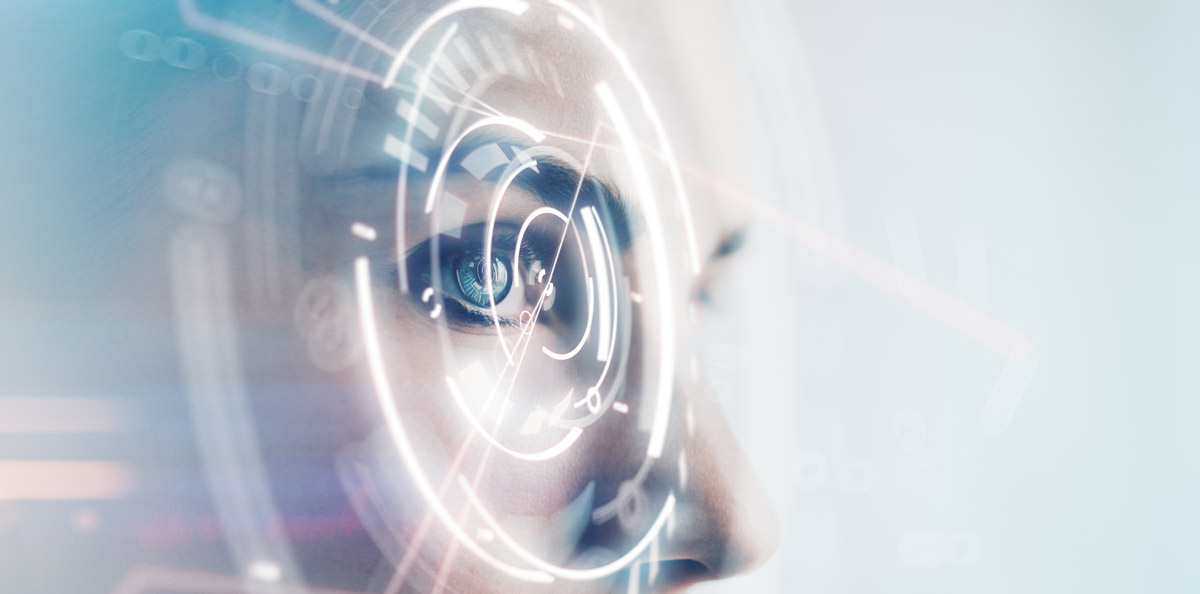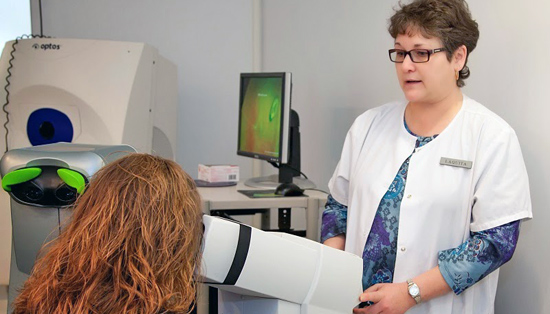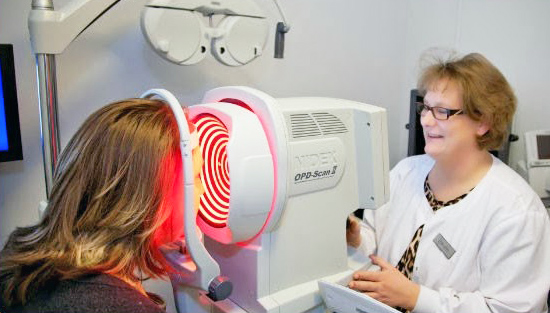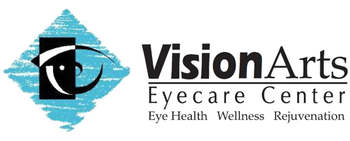Fulton, MO
Eye Health Technology

Fulton, MO
Technology
Our team of doctors are dedicated to identifying the latest developments in diagnostic procedures and patient care to prevent, detect and treat disorders of the eye.
Optomap® Retinal Exam
The Optomap® retinal exam is a revolutionary diagnostic tool that provides high-resolution digital images of the retina. It is the only technology that can capture 82% of the retina in a single shot.
The Optomap® is a fast, easy, and painless way to scan and image the retina for people of all ages. During the exam, you will look into the device one eye at a time and will see a flash of light when the image of your retina has been taken. The exam is quick and painless, taking only a few minutes to complete.

Optical Coherence Tomography
Optical coherence tomography (OCT) is a non-invasive imaging technique that uses light to produce high-resolution, cross-sectional images of the retina. Using OCT, our eye doctor can detect early warning signs of a range of eye diseases and other issues even before you have symptoms.
The OCT scan creates incredibly detailed images of the retina’s layers, allowing our doctor to track changes in your eyes’ internal structures over time. During the test, you will sit in front of the OCT machine and rest your head on a support to keep it still. Nothing touches the eye at any time, and the test only takes about 5–10 minutes to complete. Learn more about OCT.

Visual Field
Visual field testing is a diagnostic test that measures your range of vision. Using this test, our eye doctor in Fulton can detect blind spots and peripheral vision loss and recommend the best treatment for your needs.
Visual field testing is an important part of regular eye care, especially for individuals who are at high risk of eye diseases and other issues. Eye diseases such as glaucoma, macular degeneration, and optic neuritis can cause damage to the visual field. Other medical conditions like diabetes or high blood pressure can also damage blood vessels in the optic nerve and retina, resulting in vision loss. Visual field testing enables early detection and timely treatment of these conditions to prevent further vision loss.

Neurolens
If you suffer from eye strain, headaches, or neck pain regularly, eye misalignment may be the cause. While most people don’t know about eye misalignment, they may be all too familiar with its painful and uncomfortable symptoms! Our specialists have the expertise and technology to diagnose and treat eye misalignment to help alleviate discomfort and improve your quality of life. Learn more about Neurolens.
Wavefront Digital Refraction
Does this sound familiar? You go in for an eye exam, and your eye doctor flips through a series of lenses and asks which is better, one or two. This is called a refraction, and our eye care center uses the Wavefront digital refraction system to speed up the process and improve accuracy. The Wavefront system sends uniform waves of light into your eye, which then bounce back and reflect off your retina. These reflections reveal the unique imperfections in your eye structure, creating a digital “fingerprint” of your eye. This captures all the details needed to determine your exact prescription in less time than traditional methods.
MPOD Nutrient Scan
This non-invasive test measures macular pigment optical density (MPOD) to see how much protective pigment is in your macula. If your MPOD level is low, you might have a higher risk of developing macular degeneration. By measuring your MPOD levels, our eye doctor can determine if you are at risk for macular degeneration and suggest preventive measures.
In addition to assessing your risk for AMD, MPOD nutrient scans can also help us track changes in your macular pigment over time. By monitoring your MPOD levels during eye exams, we can detect early signs of macular degeneration you even notice symptoms. Learn more about MPOD Nutrient Scan.
Dark Adaptation – Virtual Reality Testing
Dark adaptation is how well your eyes adapt to low-light conditions. People with macular degeneration often have impaired dark adaptation, which can be an early warning sign of the condition. Our eye doctor uses virtual reality technology to evaluate dark adaptation, allowing us to detect macular degeneration before symptoms develop. During the test, patients wear a headset that simulates different lighting conditions while their eyes adjust. By detecting the disease in its early stages, we have a better chance of preserving your central vision and slowing down its progression. Learn more about Dark Adaptation.
Pachymetry
Pachymetry is one of a number of tests we may perform during your eye exam. It’s a quick, painless test we use to measure the thickness of your cornea, which can provide us with helpful information for diagnosing or monitoring certain conditions. The cornea is the clear, dome-shaped surface at the front of your eye that helps focus light onto your retina. We might use this test to help with diagnosing or managing glaucoma, determining your candidacy for LASIK, or diagnosing certain cornea diseases.
